 Museum
Museum  |
Bomber Command
|
Aircrew Chronicles
|
Aircrew Losses
|
Nose Art
|
BCATP
|
Lancaster
|
Media
|
Bomber Command
|
Aircrew Chronicles
|
Aircrew Losses
|
Nose Art
|
BCATP
|
Lancaster
|
Media
 Museum
Museum  |
Bomber Command
|
Aircrew Chronicles
|
Aircrew Losses
|
Nose Art
|
BCATP
|
Lancaster
|
Media
|
Bomber Command
|
Aircrew Chronicles
|
Aircrew Losses
|
Nose Art
|
BCATP
|
Lancaster
|
Media
Publications

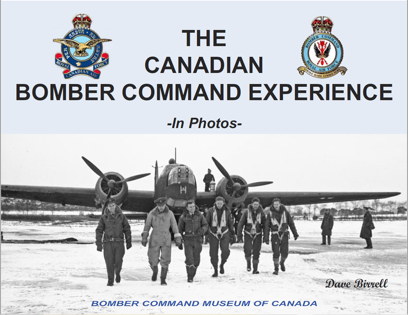
|
During the Second World War, some 40,000 young Canadians were trained in Canada and sent overseas to serve in the massive effort that was Bomber Command. 10,400 were killed. Through four hundred archival photos, this book presents their experience -from their recruitment and joining the Royal Canadian Air Force, through their training in Canada and in the United Kingdom, and finally their service with Bomber Command Squadrons in the UK and in combat in the skies over Europe. As well as telling the story of these men and women, the book and its photos also describe the development and operation of the British Commonwealth Air Training Plan, the huge effort to operate and support the strategic bombing offensive, and the development of the Royal Canadian Air Force. FREE LOW-RES DOWNLOAD |

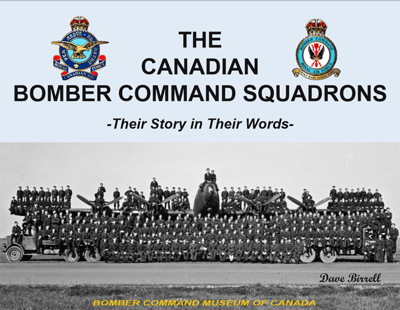
|
The Canadian contribution to the massive effort that was Bomber Command during the Second World War was huge. 10,500 Canadians were killed -almost one quarter of Canada's wartime dead. Through archival photos and excerpts from wartime documents, this book tells the story of the young Canadians who served with the Canadian Bomber Squadrons -their efforts during the early years and how they evolved as the war progressed, the technological changes, and the tactical and strategic evolution that contributed to the ultimate victory. Also included are stories of individual heroics and sacrifices as recorded by the airmen themselves at their debriefings. FREE LOW-RES DOWNLOAD |


|
The engines were the very heart of the aeroplanes of Bomber Command. The crew who started them, and flew them, the men and women who maintained them, and the aeroplanes that carried them to the enemy relied upon these powerful wartime piston engines that had been engineered to their peak of performance. The fuselage was the body to carry the crew and armaments, but it was the engines that turned the body of the bomber aeroplane into a living, breathing instrument of war. 'The Engines of Bomber Command' introduces the reader to the development of these engines and then focuses on the Rolls-Royce Merlin and the Bristol Hercules -the engines that powered the Wellingtons, Stirlings, Halifaxes, Lancasters, and Mosquitoes. The final chapter describes the restoration and running of the Merlins and Hercules that may be seen and heard at the Bomber Command Museum of Canada. See also: Aircraft Engines in the Collection |

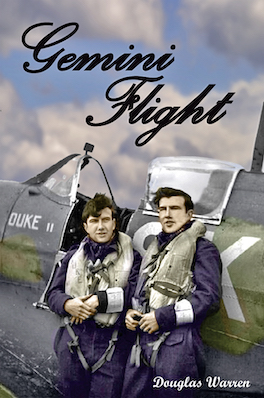
|
Born in Nanton, Alberta, identical twins Bruce and Douglas Warren trained together at High River and Medicine Hat, Alberta. They went on to fly Spitfires together from Dieppe to Normandy, completing their wartime service as the two flight commanders on 66 Squadron. Following the war, the twins' careers diverged, but both made significant contributions to the Royal Canadian Air Force during the Cold War. Bruce became a test pilot with Avro Canada, flying the Jetliner and CF-100 prototypes. Douglas flew the Canadair F-86 Sabre in Korea and Europe as the commanding officer of 410 'Cougar' Squadron. FREE LOW-RES DOWNLOAD |

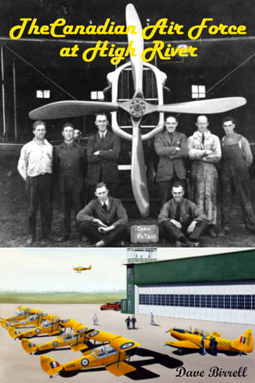
|
When the Canadian Air Force was formed in 1923, the High River Air Station was the busiest in the country. Throughout the 1920's, High River was at the forefront of aviation in Canada. The air force returned to High River in earnest during World War II as the Calgary Aero Club and the RCAF combined to operate a very successful Elementary Flying Training School that graduated thousands of young pilots for service overseas. See also: No. 5 Elementary Flying Training School FREE LOW-RES DOWNLOAD |

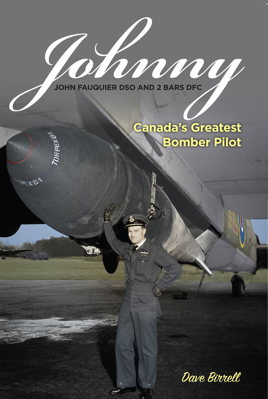
|
Air Commodore John Fauquier DSO and 2 Bars DFC was Canada's most decorated airman and its leading bomber pilot during World War II, flying at least 93 combat operations. 'Johnny' did it all during his flying career as a bush pilot, flying instructor, bomber pilot, squadron commander, pathfinder, master bomber, base commander, and finally leading the legendary 'Dambusters' squadron as they dropped 22,400 pound Grand Slam bombs on Nazi targets. See also: Johnny Fauquier -DSO and two Bars DFC FREE LOW-RES DOWNLOAD |

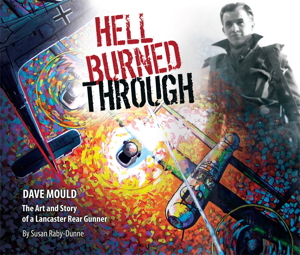
|
Hell Burned Through is primarily the story of WWII Lancaster rear gunner, David Kenneth Mould, but also of all the "air gunners" of Bomber Command. Mould didn't write a diary of his war service, but instead illustrated his training and combat operations with dramatic, full-colour paintings and pencil drawings. With Hell Burned Through, war historian and author, Susan Raby-Dunne has assembled a unique and vivid record of that singularly challenging bomber crew position - air gunner. See also: The David Mould Collection |

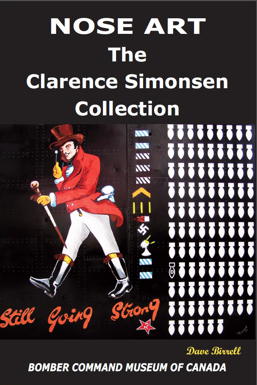
|
The artwork that adorned the noses of Bombers and other aircraft during World War II made the bold statement that these aircraft were not all the same. Their crews, through the selection of the names and the images, became forever connected to the aircraft -their lives intertwined with that of their machine. This second edition of the book incorporates colour photos of the fifty-seven nose art paintings on display at the Bomber Command Museum of Canada. See also: The Clarence Simonson Nose Art Collection FREE LOW-RES DOWNLOAD |

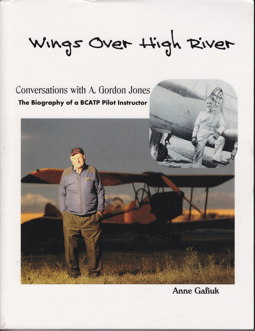
|
Veteran pilot Gordon Jones of High River first flew a Tiger Moth aircraft when he learned to fly as an 18 year old in 1941 at an RCAF base at High River. As his biography is released, this remarkable pilot owns and continues to fly tiger moth #1214, one of the aircraft in which he taught students at #5 elementary Flying Training School (High River) during World War II. For more than twenty years, Gordon has performed fly-pasts over special events at the Bomber Command Museum of Canada. His flying career is unique in the history of Canadian aviation -but there is much more than flying to Gordon's story . . . In Gordon's biography, author Anne Gafiuk has done a remarkable job of creating a very thorough record of Gordon's career, presenting his story in a most readable and interesting way utilizing numerous photos, documents, and other images. A summary of Gordon's career may be found at: Gordon Jones - Living Aviation History See also: RCAF High River |

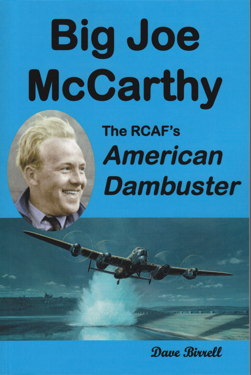
|
After training in Canada, Joe McCarthy completed a tour of operations with 97 Squadron before being personally selected by W/C Guy Gibson to fly on the Dambusters Raid. Joe continued with 617 for another 13 and a half months, participating in an additional 33 challenging and varying operations with this "special duty" squadron. Following the war, Joe spent time with the RAF's "Foreign Aircraft Flight" flying Nazi aircraft to the U.K. and evaluating them before completing his RCAF career in Canada. The author has made extensive use of video and audio interviews recorded following Joe's retirement. A summary of Joe's career may be found at: Joe McCarthy - The RCAF's American Dambuster FREE LOW-RES DOWNLOAD |

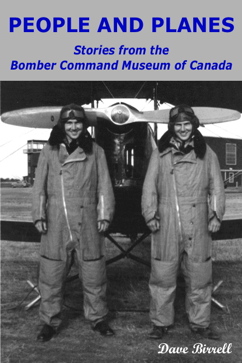
|
These thirty-nine "Stories from the Bomber Command Museum" are those of a wide variety of people who all have a direct connection to the museum. Through these stories, the history presented at our museum is told -the wartime history of Bomber Command and the British Commonwealth Air Training Plan, the history of our Lancaster Bomber, and the history of the Bomber Command Museum itself. FREE LOW-RES DOWNLOAD |

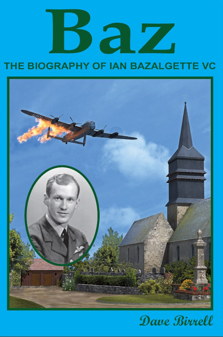
|
Based on extensive interviews with Ian Bazalgette's friends, relatives, and crewmembers, this is the complete story of a Canadian hero. This third edition incorporates over one hundred letters and other photos and documents that were only recently located by the family. "Baz" also chronicles the strong bonds that have developed between S/L Bazalgette, the Village of Senantes in France, and the Bomber Command Museum. See also: S/L Ian Bazalgette VC DFC FREE LOW-RES DOWNLOAD |

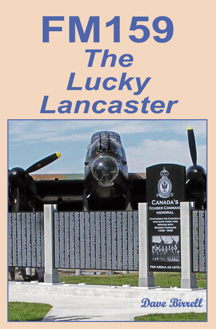
|
This book tells the complete story of Avro Lancaster Mk. X FM159 One of 7377 Avro Lancasters built to wage war against the Nazis, the Bomber Command Museum of Canada's aircraft is one of only four taxiable Lancasters in the world. It has flown widely over the Pacific, across the Atlantic, and to the northern-most point in Canada; has been only weeks away from being scrapped; was towed by a truck across grain-fields and through a river; suffered the ravages of thieves and vandals; and stood outdoors, only metres away from a major highway, for 31 years. Today, as the Ian Bazalgette Memorial Lancaster, FM159 honours a Canadian Victoria Cross Recipient and is the centre-piece of the Bomber Command Museum of Canada. FREE LOW-RES DOWNLOAD |


|
A fully illustrated summary of the history presented at the Bomber Command Museum of Canada, the museum's collection, and the story behind the development of this unique memorial to Bomber Command. FREE LOW-RES DOWNLOAD |

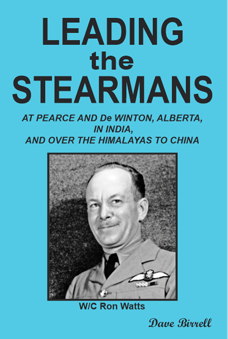
|
After serving with the Royal Air Force in Egypt and India, Ron Watts barnstormed in Britain before rejoining the RAF to become part of the British Commonwealth Air Training Plan in Canada. Much of Ron's remarkable aviation career was intertwined with a particular group of Boeing Stearman Bi-planes that he was in charge of at Pearce and De Winton in southern Alberta, at Lahore in India, and finally led over the southern Himalayas to China. The book includes Ron's remarkable story, in his own words, that he titled, "No Cowards Fly the Hump in Stearmans." During this adventure, he led eighty-four Stearmans across the Burma Hump. From our museum's point of view, the details of his time spent in southern Alberta as part of the British Commonwealth Air Training Plan draws attention to that effort and the important Royal Air Force training stations that operated at Pearce and De Winton. See also: RAF De Winton and RAF Pearce FREE LOW-RES DOWNLOAD |

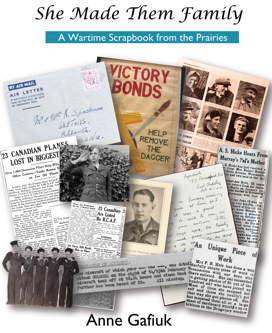
|
Mrs. Alice Spackman of Okotoks created a 'war years' scrapbook during the Second World War. She kept photos, articles, and anecdotes about many of the people who served during WW II from Okotoks and surrounding communities, as well as those who visited her from the wartime air-training base east of DeWinton. Additional research and interviews enhance his unique look at how war affected a small town in southern Alberta. See also: RAF De Winton |


|
In 1948, sixteen men were selected for a study on accident proneness. All were fully trained RCAF pilots who died between February 1943 and February 1944. Generously illustrated, this book offers a unique insight into the Second World War on the Home Front in Canada, as well as a glimpse into post-war aviation medicine and present-day aviation accident investigation. |